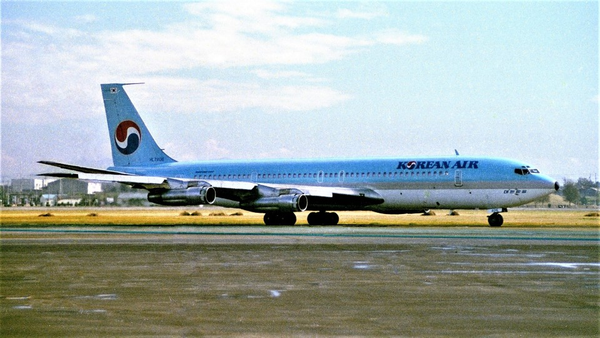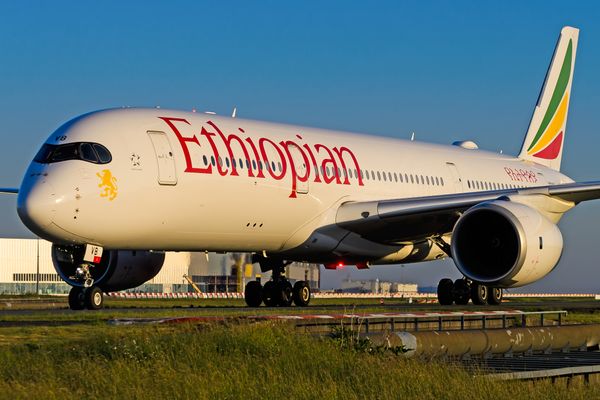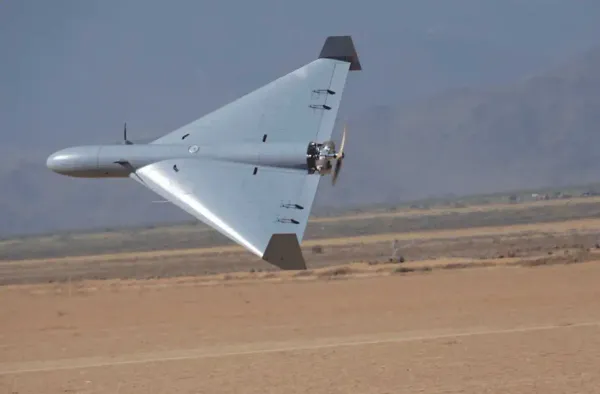As many older-generation passenger aircraft retire and get replaced by newer jets, a popular post-retirement move is converting these planes into freighters. The industry has witnessed this scenario with the Airbus A330, Boeing 767, and the 747, with the latter being specially designed with freighter conversion in mind. However, as the era of quad jets slowly concludes, many wonder if the Airbus A380 will ever see the possibility of freighter conversion.

It Almost Happened
Airbus did study the development of the Airbus A380 Freighter at some point. The A380F would have had the largest payload capacity of any cargo aircraft except for the now-gone Antonov AN-225 Mriya. The A380F's maximum payload would have been 150 tons or 330,000 pounds. Its maximum range would have been 5,600 nautical miles, equal to 6,444 miles or 10,371 kilometers.
ADVERTISEMENT • REMOVE ALL ADS (adsbygoogle = window.adsbygoogle || []).push({});
The A380F would have an improved payload and range than the current Boeing 747-8F. However, its larger size would have warranted higher operating costs. The A380F was displayed on Airbus' website until around January 2013 but was removed in April. There was never an official availability date for this aircraft.

However, an A380 "combi" variant did witness a patent application. A "combi" variant would see the possibility of carrying passengers and cargo, even reconfiguring to extend the passenger area or cargo hold. "Combi" aircraft have been seen widely in service, with examples across 747s and 737s.
Will We See an A380F?
It is unlikely that we will see a freighter version of the A380. Aviation will never see the A380F produced as a brand-new aircraft since Airbus has already shut down its A380 production line. With rising fuel costs, airlines are unwilling to operate more four-engined aircraft. This is why we have seen various passenger airlines retire aircraft like the Boeing 747, Airbus A340, and even passenger A380s in some cases.

As mentioned earlier, the A380F would have been more expensive to operate than the 747F. This is a cost that airlines do not want to mess with. There are better, more cost-effective options now that offer better range and efficiency despite having less payload capacity than an A380F. The large payload capacity of the A380F is also rather unnecessary right now. Even though cargo numbers soared during the pandemic, air cargo is currently at a lower level than what would warrant the development of an Airbus A380F.
ADVERTISEMENT • REMOVE ALL ADS (adsbygoogle = window.adsbygoogle || []).push({});
The question must also be asked, "What kind of cargo would an A380F even carry?" The way the A380's cockpit windows are placed completely rules out the possibility of converting the A380 to have a front-loading cargo door as seen on factory-built Boeing 747Fs. The front-loading door allows aircraft like the 747F, AN-124, and Airbus Beluga to carry oversized cargo. With this feature impossible on the A380F, there's no point in developing it.

The impossibility of a front-loading door on the A380F, aside from the aircraft's high costs, is perhaps another good reason why this plane will never exist. One could argue that developing the A380F with a "swing-open" fuselage like the 747 Dreamlifter would enable it to carry oversized cargo.
That might be a good enough argument. However, Airbus has already cut the A380 production line, and airlines want to avoid dealing with the high cost of operating four-engined planes. While the A380F will live on in model aircraft form and mockups, the aircraft is unlikely to become a reality.
ADVERTISEMENT • REMOVE ALL ADS (adsbygoogle = window.adsbygoogle || []).push({});
Citation C550 Fireball: Greg Biffle and Five Others Killed in Failed Emergency Landing at KSVH » Cities in the Sky: The Future Built on eVTOL Flight » Why Fast Price Estimation Has Become Critical for Brokers and Clients »
Comments (1)
 mkindy
The most important reason (and arguably the only one that actually matters) is the size of the A380 limits which airports it is able to utilize.. as a freighter this makes the A380 almost pointlless.. regardless of any other reson.
mkindy
The most important reason (and arguably the only one that actually matters) is the size of the A380 limits which airports it is able to utilize.. as a freighter this makes the A380 almost pointlless.. regardless of any other reson.
Add Your Comment
SHARE
TAGS
INFORMATIONAL Airbus A380 Airbus A380 A380F Cargo Conversion EngineeringRECENTLY PUBLISHED
 KAL858: The North Korean Bombing that Shocked the World
Among the 99 passengers boarding Korean Air Flight 858 on November 29, 1987, few could imagine their journey would end as one of aviation's darkest mysteries.
STORIES
READ MORE »
KAL858: The North Korean Bombing that Shocked the World
Among the 99 passengers boarding Korean Air Flight 858 on November 29, 1987, few could imagine their journey would end as one of aviation's darkest mysteries.
STORIES
READ MORE »
 Ghost Networks: The Rise, Fall, and Revival of Fifth-Freedom Flights
Fifth-freedom flights — routes where an airline flies between two countries outside its home base — have always lived in aviation's twilight zone. We chart their rise, their near-disappearance, and the surprising markets where they still thrive today. Then we take you on board a special Seoul-Tokyo fifth-freedom flight to show how the experience stacks up against a typical regional carrier.
TRIP REPORTS
READ MORE »
Ghost Networks: The Rise, Fall, and Revival of Fifth-Freedom Flights
Fifth-freedom flights — routes where an airline flies between two countries outside its home base — have always lived in aviation's twilight zone. We chart their rise, their near-disappearance, and the surprising markets where they still thrive today. Then we take you on board a special Seoul-Tokyo fifth-freedom flight to show how the experience stacks up against a typical regional carrier.
TRIP REPORTS
READ MORE »
 US Air Force to Launch New Experimental One-Way Attack Drone Unit
In a move that signals a tectonic shift in American airpower, the U.S. Air Force is preparing to stand up its first-ever experimental unit dedicated solely to "One-Way Attack" (OWA) drones.
NEWS
READ MORE »
US Air Force to Launch New Experimental One-Way Attack Drone Unit
In a move that signals a tectonic shift in American airpower, the U.S. Air Force is preparing to stand up its first-ever experimental unit dedicated solely to "One-Way Attack" (OWA) drones.
NEWS
READ MORE »



